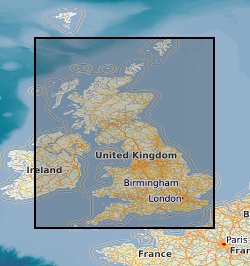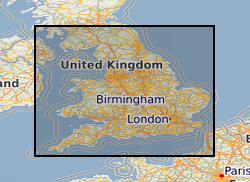2009
Type of resources
Available actions
Topics
Keywords
Contact for the resource
Provided by
Years
Formats
Representation types
Update frequencies
Scale
Resolution
-

This dataset has now been superseded, please see the Measured Urban Soil Chemistry dataset. The BGS digital point source urban soil chemistry data (GB_PointSourceUrbanSoilPHE_v1) comprises the locations and concentrations (mg kg-1) of Arsenic (As), Cadmium (Cd), Chromium (Cr), Nickel (Ni) and Lead (Pb) in urban topsoil samples. The data is derived from the national, high resolution urban soil geochemical data from the BGS Geochemical Baseline Survey of the Environment (G-BASE) project. The information is relevant for the first stage of any assessment of risks to human health required by regulatory authorities in relation to land use and also for assessing ecological risk. Although point source PHE (Potentially Harmful Element) concentrations above respective SGVs (Soil Guideline Value) do not necessarily imply a significant health risk, they do highlight the need to consider whether or not there may be a risk. The urban soil chemistry data can be used to assist Local Planning Authorities to identify those areas where a risk assessment may need to be carried out by developers. Comparison of this spatially referenced geochemical data with information on current or historic land use and geological information might help environmental professionals decide whether high PHE concentrations in topsoils can be attributed to geogenic or anthropogenic sources. The point source data is based on an interpretation of the records in the possession of the BGS at the time the dataset was created.
-

14 OBS stations and 9 land stations (6045, 6146, 6113, 6048, 6111, 6145, 6120, 6078, 6092)
-

Collection of hydrogeological reports and maps for various different overseas countries derived from various sources.
-

This dataset has now been superseded, please see the Estimated Ambient Background Soil Chemistry England and Wales dataset. This dataset indicates the estimated topsoil Arsenic(As), Cadmium (Cd), Cr (Chromium), Nickel (Ni) and Lead (Pb) concentrations (mg kg-1) derived by spatial interpolation of the point source urban soil PHE (potentially harmful elements) data. Urban soil geochemical data generally have large positive skewness coefficients so were transformed by taking natural logarithms. To overcome the bias associated with traditional measures of location (mean) and scale (standard deviation) for log-normal data, the inverse distance weighted (IDW) mean and standard deviation of log transformed element concentrations were used for mapping the spatial variation in As, Cd, Cr, Ni and Pb concentrations. The soil chemistry data is based on GBASE (Geochemical Baseline Survey of the Environment) soil geochemical data where these are available. Elsewhere the stream sediment data are converted to surface soil equivalent potentially harmful element(PHE) concentrations. This dataset covers England and Wales but data is available for the whole of Great Britain, with the exception of the London area where an inadequate number of geochemical samples are available at the moment.
-

to provide reliable molecular fingerprints for biodegraded crude oils and contaminated sediment cores and to facilitate correlation studies The aim is to demonstrate the potential of hydropyrolysis (pyrolysis assisted by high hydrogen gas pressure) as a novel means to provide reliable molecular fingerprints for biodegraded oils and contaminated cores where conventional biomarker approaches fail. This will then facilitate accurate and rapid oil-source and oil-oil correlations to be determined for the first time in these situations. New experimental protocols for conducting hydropyrolysis on asphaltenes will be developed. The study will establish a firm base to exploit the commercial potential of hydropyrolysis, both in oil exploration and for characterising sedimentary organic matter as a far superior technique to pyrolysis-GC-MS through a larger industrial partner.
-

Mainly digital photos and Perl (pl) scripts provided as part of the P Bradbury studentship set of data.
-

Seismic Data from D275. The Amazon Cone is a deep-sea fan system that developed on a continental margin approximately 90-100 Myr following a rifting event. Gravityand flexure modelling suggest that the Cone sediments have loaded the margin almost to the limits of its strength. The investigators propose to carry out the first seismic refraction experiment to determine the structure of the crust and mantle that has been deformed by the Cone load. The experiment will provide new constraints on the structure, the nature of the ocean-continental boundary, the thermal and mechanical properties, and the resource potential of deep-water continental margins. All seismic reflection and refraction data are currently being held by the PIs at Oxford and Durham
-

Database of inorganic water quality analyses from research projects both in the UK and overseas.
-

Mountain belts disrupt atmospheric circulation patterns and profoundly influence climate. Understanding long-term climate change thus requires good definition of timing and growth rate of major mountain belts, but is complicated by high erosion rates which remove much of the early record of mountain formation. Sophisticated geodynamic and climate-atmosphere models describe the evolution and influences of the Himalayan-Tibet orogen. Many geodynamic models predict palaeogene crustal thickening with little or no early exhumation and erosion. Such models need testing. Decades of geological, geophysical and geochemical investigations centred on the continental rock record have failed to produce data sets suitable for testing fully such models because information about the early orogen evolution is missing. Our alternative strategy looks at marine sediments formed from material eroded in the early history of the mountain belt and preserved in the Andaman Islands, Sylhet Trough, Bangladesh and Iranian Makran. These sediments contain a record of their origin and early history in the Himalayas-Tibet which can be recovered using a combination of geochemical and thermochronological methods. Results from this project will provide the groundwork for major international collaborative projects to drill sediments eroded off the Himalayas and deposited offshore in the Indus and Bengal submarine fans.
-

NW illuminated bathymetry
 NERC Data Catalogue Service
NERC Data Catalogue Service